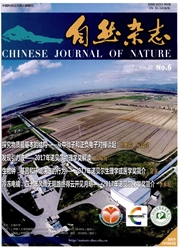

 中文摘要:
中文摘要:
青藏高原作为中国乃至亚洲生态安全屏障的重要载体,其生态系统变化已成为公众和学者关注的焦点问题之一。基于前人的研究结果,并结合相关数据分析,从气候变化和人类舌动视角阐释了2000-2013年青藏高原植被绿度变化的时空过程及其原因。结果表明:2000—2013年青藏高原生长季植被覆盖度总体增加3%-5%,或称变绿了,但局部地区植被覆盖度出现下降。约98.34万km2的区域植被覆盖度呈现增加趋势,其中显著增加的地区面积为16.85万km2,主要分布在高原中东部;约5-73万km。的地区覆盖度呈现下降趋势,其中0.18万km2的地区显著下降,主要位于西藏中西部。气候暖湿化和生态建设是高原植被绿度增加的主要因素,但局部区域人类活动强度增加和气候暖干化导致的高寒植被退化也不容忽视。
 英文摘要:
英文摘要:
The Tibetan Plateau (TP), known as an important carrier of ecological shelter in China, even in Asia, has attracted a great of attentions because its ecosystem was very sensitive to global changes. Based on the results of previous studies and the analysis of relevant data, this study aimed to identify the temporal-spatial pattern of the alpine vegetation change and its drivers based on the perspective of climate change and human activities on the TP from 2000 to 2013. The results showed that the coverage of alpine vegetation has slightly increased by 3%-5% on TP since 2000. The vegetation coverage of about 98.34 × 10^4 km2 increased, with a significant increase in 16.85 ×10^4 km2, distributed mainly on the central and eastern part of the TE The vegetation coverage of about 5.73 × 10^4 km2 decreased, with a significant decrease in 0.18 × 10^4 km2, mainly on the central and western part of the Tibet Autonomous Region. Climate warming and moistening and ecological construction are the main factors for the greening of alpine vegetation. However, the role of the increase of human activity intensity and climate warming and drying on vegetation degradation in local area should not be neglected.
 同期刊论文项目
同期刊论文项目
 同项目期刊论文
同项目期刊论文
 期刊信息
期刊信息
